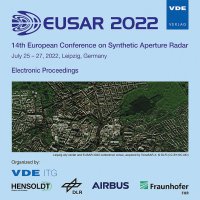Advances in automatic InSAR-derived TanDEM-X DEM editing
Konferenz: EUSAR 2022 - 14th European Conference on Synthetic Aperture Radar
25.07.2022 - 27.07.2022 in Leipzig, Germany
Tagungsband: EUSAR 2022
Seiten: 6Sprache: EnglischTyp: PDF
Autoren:
Gonzalez, Carolina; Bueso Bello, Jose Luis; Gollin, Nicola; Carcereri, Daniel; Rizzoli, Paola; Zink, Manfred (Microwave and Radar - DLR, Weßling, Germany)
Inhalt:
InSAR-derived digital elevation models (DEMs) are currently the best way to generate global and homogeneous products representing the Earth’s topography. Nevertheless DEMs derived from InSAR are not always complete and can contain artifacts (e.g. invalid values caused by the side-looking nature of SAR) or not represent the surface height in case of penetration into volumetric targets such as forests or snow covered regions. For these reasons the global TanDEM-X DEM has been completely edited at 30m resolution, in order to make it suitable for a large number of applications, such as orthorectification, processing of SAR acquisitions and hydrological modelling. Indeed, the results of this gap-less global TanDEM-X DEM version are currently being used for the processing of the new TanDEM-X data to generate an updated layer, the so-called TanDEM-X DEM 2020. Moreover, TerraSAR-X and TanDEM-X are continuing the bistatic operation and new interferometric acquisitions allow for the generation of further DEM updates, for example for monitoring dynamic changes in the cryosphere or in forested areas. Each new DEM can have gaps or noisy water surfaces, which need to be edited as well. For these newly generated DEMs we developed an advanced automatic editing as direct extension of the interferometric processing chain. The process includes the generation of different land cover maps and maps of parameters describing the acquisition geometry to facilitate the editing of the DEM in the best possible way. This paper presents the new editing approach.


